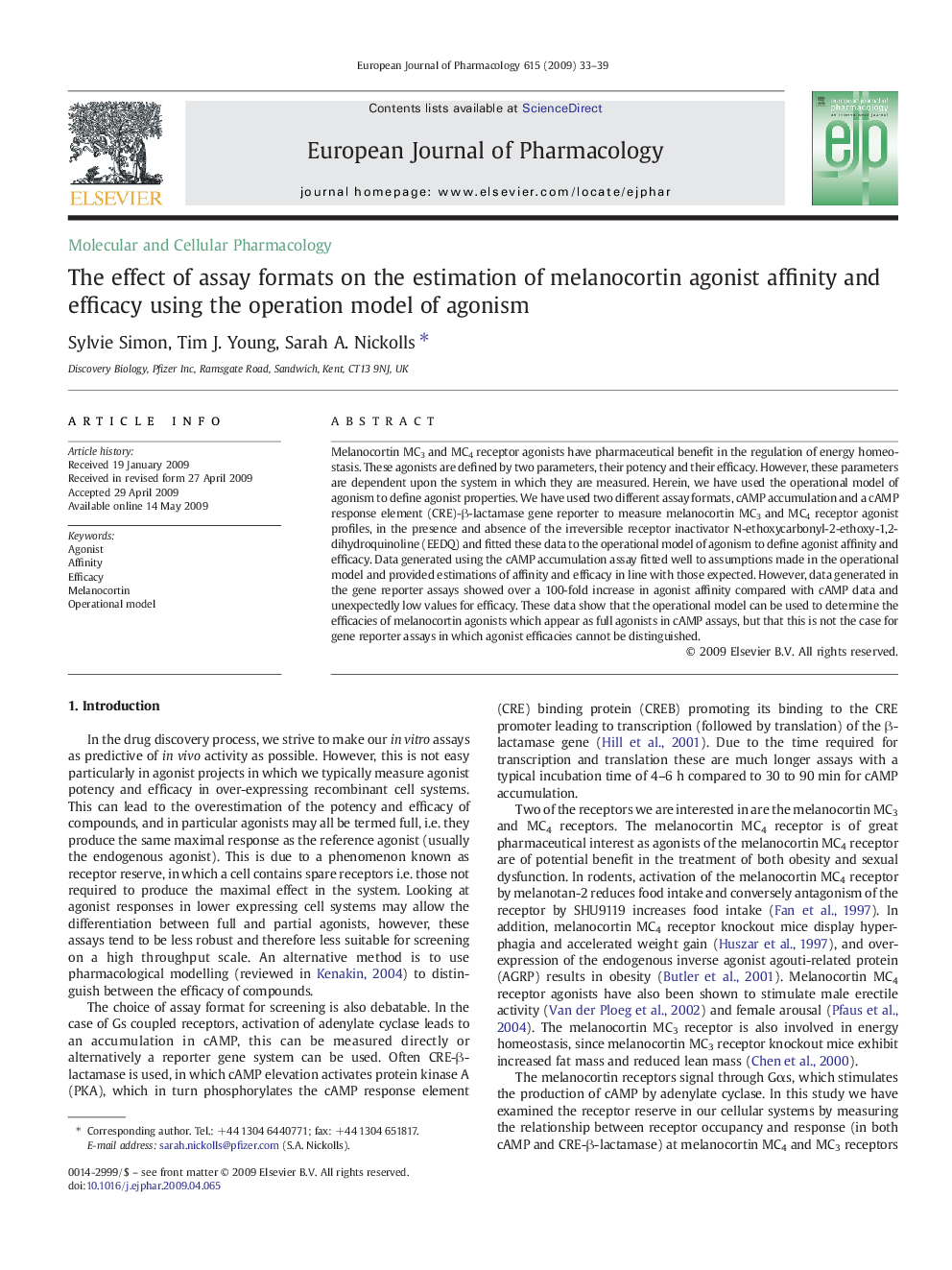| Article ID | Journal | Published Year | Pages | File Type |
|---|---|---|---|---|
| 2534201 | European Journal of Pharmacology | 2009 | 7 Pages |
Melanocortin MC3 and MC4 receptor agonists have pharmaceutical benefit in the regulation of energy homeostasis. These agonists are defined by two parameters, their potency and their efficacy. However, these parameters are dependent upon the system in which they are measured. Herein, we have used the operational model of agonism to define agonist properties. We have used two different assay formats, cAMP accumulation and a cAMP response element (CRE)-β-lactamase gene reporter to measure melanocortin MC3 and MC4 receptor agonist profiles, in the presence and absence of the irreversible receptor inactivator N-ethoxycarbonyl-2-ethoxy-1,2-dihydroquinoline (EEDQ) and fitted these data to the operational model of agonism to define agonist affinity and efficacy. Data generated using the cAMP accumulation assay fitted well to assumptions made in the operational model and provided estimations of affinity and efficacy in line with those expected. However, data generated in the gene reporter assays showed over a 100-fold increase in agonist affinity compared with cAMP data and unexpectedly low values for efficacy. These data show that the operational model can be used to determine the efficacies of melanocortin agonists which appear as full agonists in cAMP assays, but that this is not the case for gene reporter assays in which agonist efficacies cannot be distinguished.
